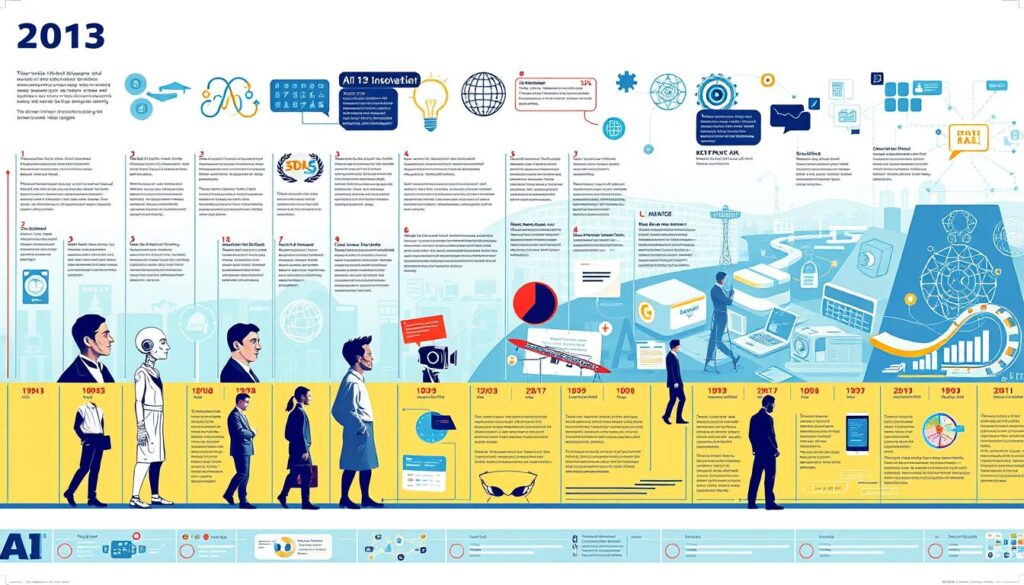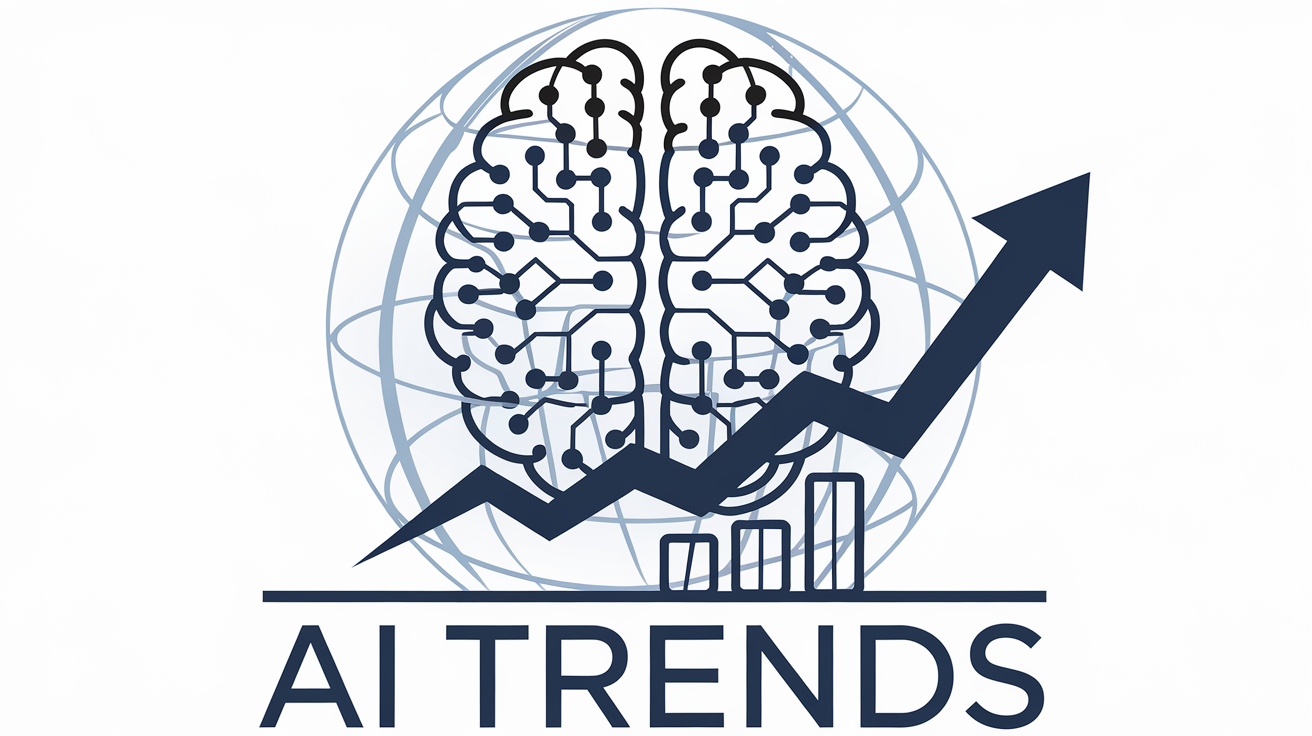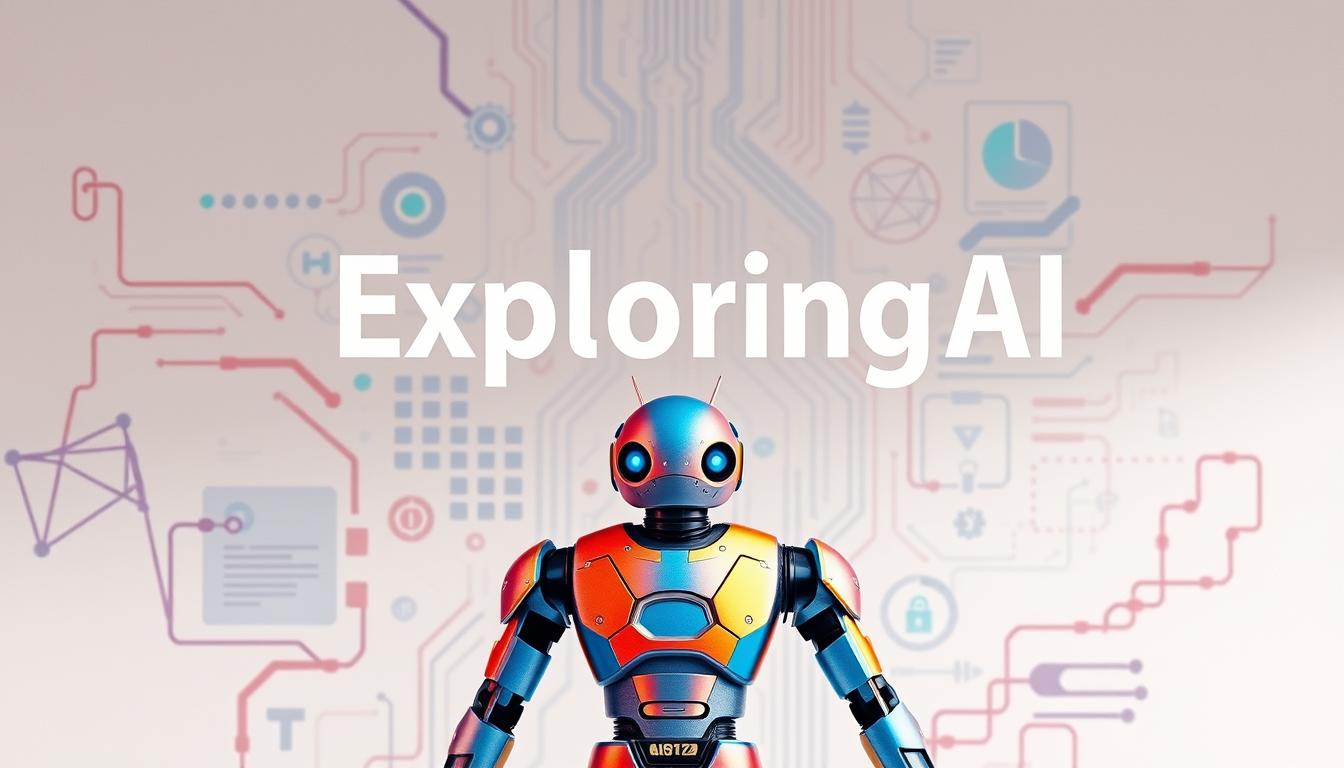Welcome to your first steps into the world of AI! This article is your AI for beginners guide. It breaks down artificial intelligence basics in simple terms. Whether you’re curious about Siri or AI’s role in healthcare or business, this guide is for you.
Why learn about AI now? AI shapes our daily lives, from smartphones to self-driving cars. This guide makes complex ideas like machine learning and neural networks easy to understand. No coding skills needed—just curiosity!
Table of Contents
ToggleKey Takeaways
- Learn AI for beginners concepts through everyday examples.
- Understand how artificial intelligence basics apply to technology you use daily.
- Discover why AI matters for future careers and innovation.
- Build a foundation to join global AI conversations confidently.
- Explore real-world applications from tech giants like Google and Tesla.
What Is Artificial Intelligence? Understanding the Basics
Artificial intelligence (AI) is behind many things we use today, like smart speakers and movie suggestions. For AI for beginners, this is a good starting point. It explains key concepts simply.
Defining AI in Simple Terms
What is artificial intelligence? AI is about making systems that think like humans. Imagine teaching a robot to solve puzzles. It’s like how chatbots help with customer questions or apps suggest songs.
At its heart, AI uses data to find patterns and make decisions.
“AI is the new electricity, transforming every industry.” — Andrew Ng, AI pioneer
The Difference Between AI, Machine Learning, and Deep Learning
These terms are often confused. Here’s a quick guide:
| Term | Definition | Example |
|---|---|---|
| AI | Broader field of smart machines | Virtual assistants like Siri |
| Machine Learning (ML) | A subset focused on learning from data | Email spam filters |
| Deep Learning | A type of ML using neural networks | Self-driving car vision systems |
Why AI Matters in Today’s World
- Healthcare: Detecting diseases faster
- Transportation: Safer autonomous vehicles
- Education: Personalized learning tools
Learning AI basics opens doors in every field. It improves healthcare and makes daily tasks easier. AI’s impact is everywhere.
The Evolution of Artificial Intelligence
Exploring the history of AI shows how much this tech has grown. It also hints at its future. Let’s look at the key moments that shaped today’s AI systems.
- 1956: The Birth of a Term – At Dartmouth College, a summer workshop led by John McCarthy coined the term “artificial intelligence.” This marked the start of AI development as a formal field of study.
- AI Winters (1970s–1980s) – High hopes turned to setbacks. Funding dried up after early AI systems failed to meet expectations, leading to decades of slowed progress.
- 2000s: The Comeback – Faster computers and big data revived AI. Breakthroughs like neural networks and deep learning made complex tasks—like speech recognition—possible.
“Every aspect of learning or any other feature of intelligence can be so precisely described that a machine can be made to simulate it.” – John McCarthy, AI pioneer

For AI for beginners, learning about its history is key. It shows how past failures and successes led to today’s tech. From chatbots to self-driving cars, each step teaches us about innovation.
Innovation isn’t always straightforward. It’s a mix of persistence and new tools. Understanding AI’s history helps us see why its future is so promising. And why we need to be patient as we face new challenges.
AI for Beginners: Core Concepts and Technologies
Unlocking AI’s potential starts with mastering its foundational ideas. Let’s explore the tools and principles shaping this transformative field.

How Machines Learn: Training Data and Algorithms
Machine learning basics begin with data—like teaching a child to recognize a cat. AI systems analyze labeled examples (training data) to spot patterns. Algorithms act as their “study guides,” adjusting behavior through trial and error. For instance, Netflix uses this process to suggest shows based on your history.
Types of AI Systems: Narrow vs. General Intelligence
| Narrow AI | General AI |
|---|---|
| Performs one task (e.g., Siri answering questions) | Hypothetical system handling any task, like a human |
| Current reality (e.g., facial recognition) | Still theoretical, not yet achieved |
The Building Blocks: Neural Networks Explained Simply
Neural networks mimic the brain’s structure. Imagine layers of interconnected nodes processing information: input data flows through hidden layers, adjusting outputs until they “learn.” Think of it as a digital puzzle-solver refining guesses over time.
Ethical Considerations in AI Development
“AI’s power demands responsibility.”
- Bias in training data can lead to unfair outcomes (e.g., facial recognition errors)
- Data privacy concerns with tools like smart home devices
- Job shifts as automation grows
Understanding these core ideas empowers AI for beginners to engage thoughtfully with technology shaping our world.
How AI Is Transforming Our Everyday Lives
AI helps us in many ways, from sending emails to suggesting TV shows. It makes our lives easier and more efficient. Let’s see how these changes affect us and why they’re important for beginners.

AI in Your Smartphone: Virtual Assistants and Beyond
Smartphones are full of AI. Virtual assistants like Siri and Google Assistant understand what we say. They help us in many ways.
- Virtual Assistants: They listen to our voice commands to remind us or play music.
- Photo Apps: They can tag our friends in photos using facial recognition.
- Predictive Text: They guess what we’re typing, getting better over time.
AI Powering Smart Homes and Transportation
Smart thermostats like Nest adjust the temperature based on our habits. Security systems use AI to tell the difference between family and strangers. Apps like Waze help drivers avoid traffic.
Self-driving cars, like Tesla’s Autopilot, use AI to avoid obstacles.
| Category | AI Use Case | Example |
|---|---|---|
| Home | Energy Management | Nest Thermostat |
| Transportation | Road Safety | Autonomous Emergency Braking |
| Navigation | Traffic Prediction | Google Maps |
Healthcare, Education, and Business Applications
“AI is not just for tech experts—it’s here to help everyone.” — World Economic Forum
In healthcare, AI quickly finds diseases in scans. Education uses AI to make learning fit each student’s pace. Businesses use chatbots for customer service and predict trends.
Conclusion: Your Journey Into Artificial Intelligence Begins Here
Now you know the basics of AI. It’s time to start your journey. Begin with getting started with AI by trying out experiments or taking online courses. Sites like Coursera and edX have AI learning resources for beginners.
Books like AI for Beginners by Nick McCrea make complex ideas simple. Try tools like Google’s Teachable Machine to test your ideas without risk.
Stay updated with tech blogs like MIT Technology Review or IEEE Spectrum. Every course, article, or project you try adds to your knowledge. AI is changing fields like healthcare and education, and knowing the basics can open doors in any career.
You’ve got a solid foundation—now it’s time to build on it. Keep experimenting, asking questions, and join communities like Reddit’s r/MachineLearning to learn more.
Knowing about AI is a powerful skill in today’s world. This guide is your starting point, whether you’re a student, professional, or lifelong learner. Keep exploring through tutorials, podcasts, or local meetups. The future of AI is for those who are curious and willing to learn. Your first step is done—now take the next one boldly.
FAQ
What exactly is Artificial Intelligence?
Artificial Intelligence (AI) is when machines act like humans. They can learn, reason, and fix their own mistakes. It’s like having a machine that can understand speech or make choices like we do.
How does AI differ from Machine Learning and Deep Learning?
AI is the big idea of making machines smart like us. Machine Learning is a part of AI where machines get better at tasks by learning from data. Deep Learning is even more specific, using special networks to understand data in detail.
Why is understanding AI important today?
Knowing about AI is key because it changes our lives in many ways. It helps us understand jobs and how we use technology. It also helps us talk about AI’s role in our world.
How do machines learn?
Machines learn by looking at lots of data. They find patterns, just like we do. For example, they get better at recognizing pictures or understanding words by seeing them over and over.
What are the different types of AI systems?
There are two main kinds of AI. Narrow AI does one thing well, like a voice assistant. General AI is still just an idea, but it would be as smart as us and could do anything we can.
Can you explain neural networks in simple terms?
Neural networks are like our brains but for computers. They have layers of nodes that work together. This helps them spot patterns and make guesses, like recognizing pictures or speech.
What ethical considerations should we be aware of in AI?
We need to think about AI’s ethics. This includes avoiding unfair biases, protecting our privacy, and how it might change jobs. It’s important to use AI wisely as it shapes our world.
How is AI integrated into our daily lives?
AI is in many things we use every day. Like virtual assistants on phones, smart home devices, and even in healthcare. Seeing how AI affects our lives helps us understand its big impact.
What resources are available for beginners wanting to learn more about AI?
There are lots of ways for beginners to learn about AI. Online courses, books, and tools like Google’s Teachable Machine are great places to start. They help build a strong AI knowledge base.
You may like: 7 Ways AI-Driven Decision Making Transforms Business Strategies

